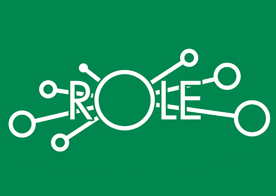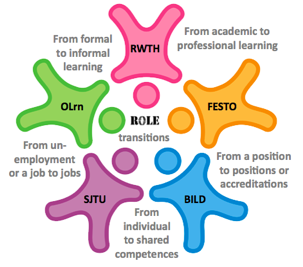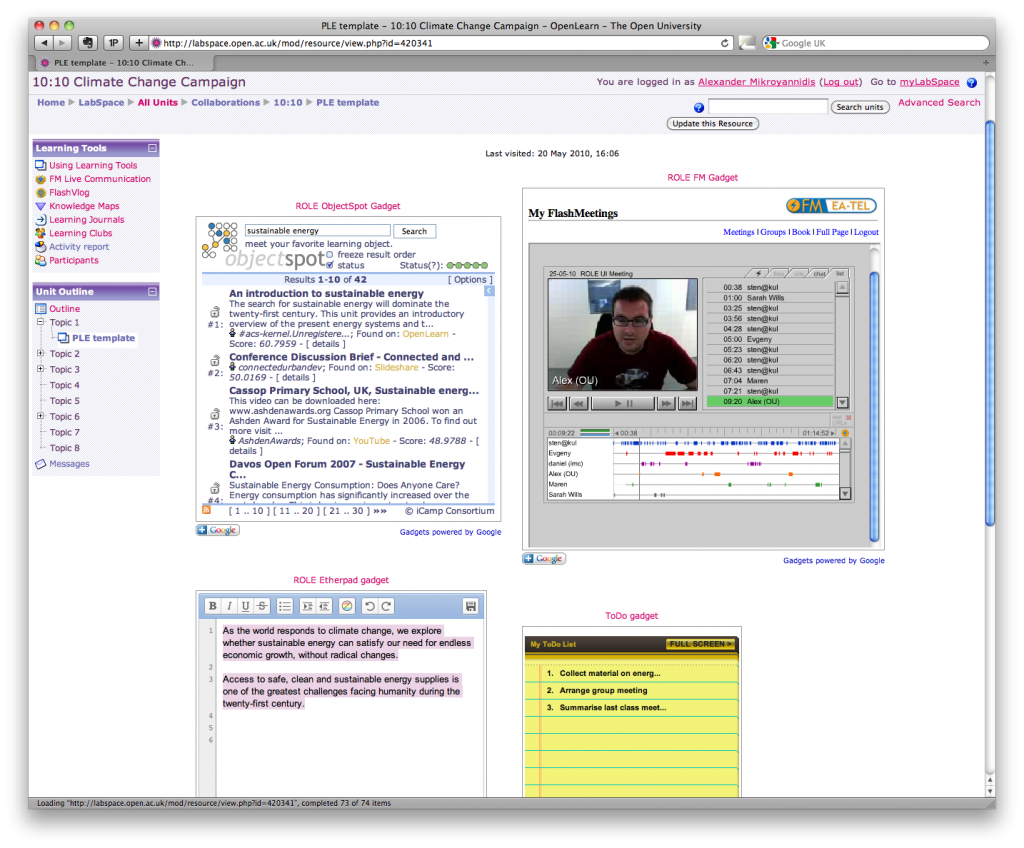About

ROLE (Responsive Open Learning Environments) was an EU FP7 project in the area of highly responsive Technology-Enhanced Learning (TEL) environments, offering breakthrough levels of effectiveness, flexibility, user control, and mass individualisation.
The ROLE Test-beds
The ROLE test-beds featured scenarios from transitions across various learning contexts:
- The Shanghai Jiao Tong University test-bed (Continuing Education for Transition between two Jobs)
- The RWTH Aachen University test-bed (Transition from University to Company)
- The Festo Lernzentrum test-bed (Internal Job Opportunity in a Company)
- The British Institute for Learning and Development test-bed (Continuing Education for Transition between two Jobs)
- The OpenLearn test-bed by the Open University (Continuing Education for Transition between two Jobs)

The OpenLearn Test-bed
The OpenLearn test-bed aimed to provide learners with a richer and more personalised experience by transitioning towards the Personal Learning Environment (PLE) paradigm. This shift offered significant benefits by focusing on learners’ needs and preferences, allowing them to access a broader range of learning resources from both internal and external sources.
A demonstration of this approach included ROLE gadgets embedded within an OpenLearn course. In one example, a learner studying climate change and sustainable energy used the ObjectSpot search gadget to find learning materials from OpenLearn, iTunesU, Wikipedia, SlideShare, and YouTube. Collaboration with other learners was facilitated through the FlashMeeting and Etherpad gadgets. Additionally, third-party tools, such as the To-do gadget, were used to help prioritise learning tasks.

The transformation of OpenLearn into a Personal Learning Environment (PLE) was driven by three key issues:
- Tools and Personalisation – The tools in OpenLearn were initially not linked to specific learning content. To enhance personalisation, efforts were made to connect content with tools and allow users to integrate their own tools. This gave learners greater control over content manipulation and production, tailoring their learning environment to their needs.
- Collaborative Learning – OpenLearn’s content consisted mainly of standalone units, typically studied in isolation. Although some social tools were available, there was a lack of support for collaborative learning. Improvements focused on fostering learning communities to encourage shared learning experiences rather than solitary study.
- Support for Self-Regulated Learning – OpenLearn was originally designed around study units rather than learner profiles, resulting in a lack of personalised guidance. Learners received no structured support for self-regulated learning or competency-based progression. Additionally, there was no formal user model, with all users relying on a basic Moodle profile. Enhancements were needed to provide better guidance and structure for independent learning.
ROLE courses in OpenLearn
There were two courses that ROLE had available in OpenLearn:
Self Regulated Learning
The course provided an overview of the concepts behind Self Regulated Learning (SRL) and also offered an opportunity to use a selection of learning tools that were developed by the ROLE project. The learner was introduced to SRL through a series of learning scenarios and examples that were accompanied by the relevant learning activities. These learning activities enabled the learner to use the ROLE tools in order to apply the SRL principles to their own learning, as well as assess their SRL skills.
Responsive Open Learning Environments
This course provided an overview of the concepts behind Personal Learning Environments (PLEs) and also demonstrated a selection of learning tools that were developed by the ROLE project. Additionally, it gave the learner an opportunity to use some of these tools through a set of learning activities. Finally, a step-by-step guide was provided, containing instructions on how to start building a PLE in iGoogle.
Build your Responsive Open Learning Environment (ROLE)
The “Build Your Responsive Open Learning Environment (ROLE)” workshop took place on July 11, 2012, in Aveiro, Portugal, as part of the PLE Conference 2012. It was an interactive session aimed at participants interested in creating their own widget-based Responsive Open Learning Environment (ROLE) and designing custom widgets through structured activities.
Background
A Personal Learning Environment (PLE) was introduced as an innovative concept that allowed learners to aggregate, manipulate, and share digital content within a flexible online space. The ROLE project, a European initiative, aimed to empower learners by providing tools and services for lifelong and personalised learning.
During the workshop, participants experimented with ROLE learning tools and widgets, creating custom mash-ups to suit their learning or research needs. Additionally, they designed their own widgets based on specific learning scenarios and had the opportunity to submit their designs to the ROLE Widget Enchantment contest, where winners received support for implementation.
Workshop Structure
The session followed a structured approach:
- Introduction – Overview of PLE methodologies and technologies developed by ROLE.
- Group Activity 1 – Participants explored ROLE widgets to find and share learning resources online.
- Plenary Discussion – Review of the first activity outcomes.
- Group Activity 2 – Participants created widget mash-ups using ROLE platforms like ROLE Sandbox and Graasp.
- Plenary Discussion – Reflection on the second activity.
- Group Activity 3 – Participants designed custom widgets, defining their learning scenario, actors, and storyboard.
- Conclusion & Next Steps – Summary of insights and future directions.
Workshop Objectives & Outcomes
By the end of the workshop, participants had:
- Gained a comprehensive understanding of PLEs, their challenges, and their applications.
- Developed an awareness of available tools and resources to support PLEs.
- Learned about widget design and development processes.
- Taken away tangible learning resources, widget mash-ups, and contest entries.
Organisers
The workshop was organised by:
- Alexander Mikroyannidis – The Open University, UK
- Denis Gillet – EPFL, Switzerland
- Sylvana Kroop – Centre for Social Innovation (ZSI), Austria
- Daniel Dahrendorf – IMC Information Multimedia Communication AG, Germany
Presentations
Build your Responsive Open Learning Environment (Part I)
Build your Responsive Open Learning Environment (Part II)
Team
Alexander Mikroyannidis
Peter Scott
Teresa Connolly
Joe Corneli
Fridolin Wild.